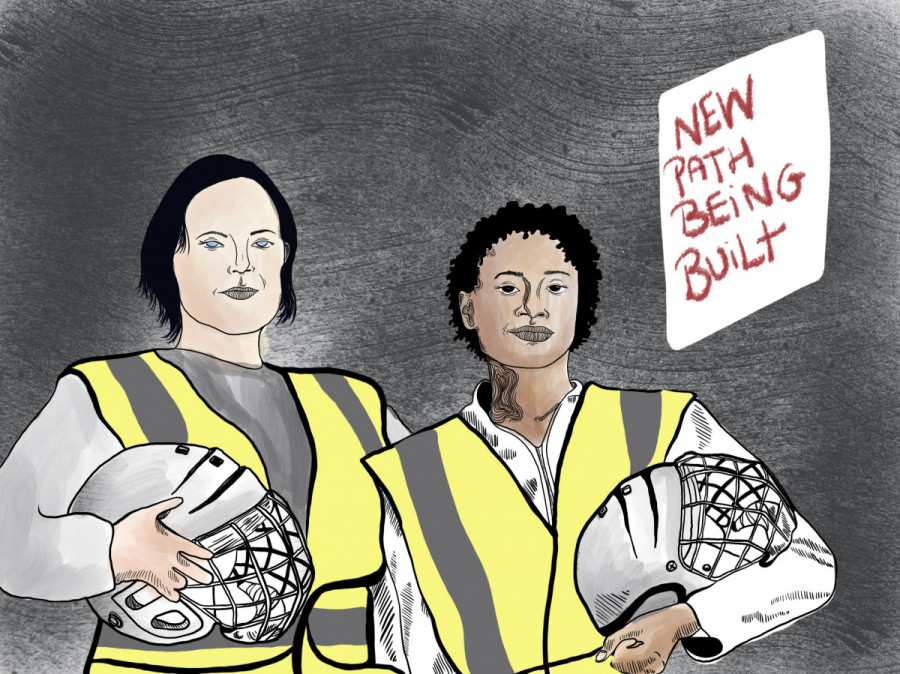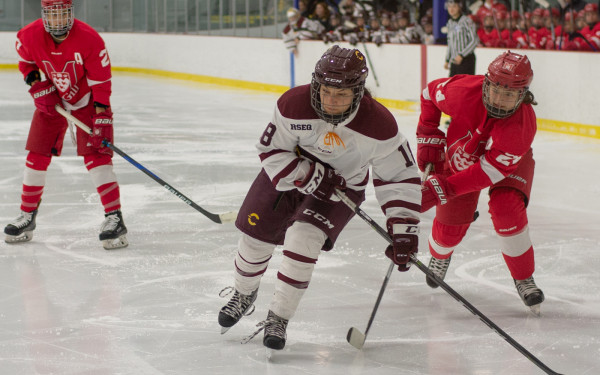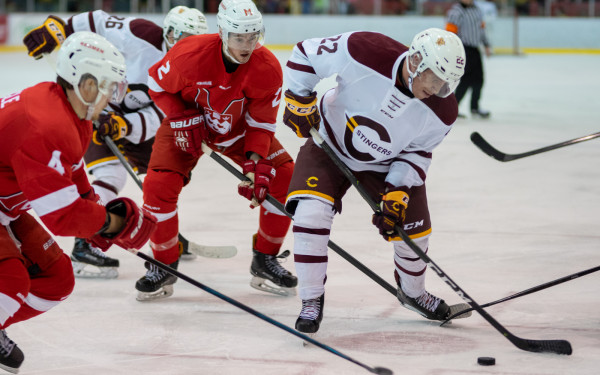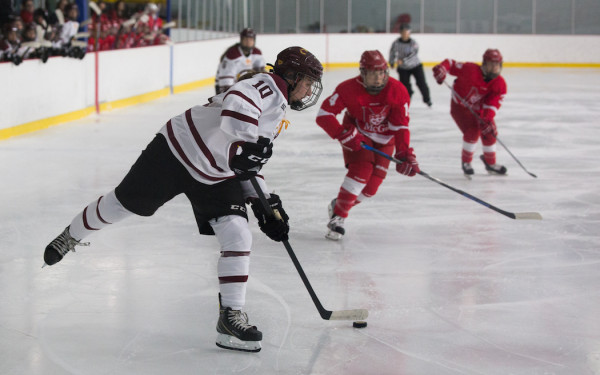Understanding the Growth of Women’s Hockey
Concordia Alumni and Athletes Provide Their Insights
Social media, streaming services, hockey idols and increased opportunities: they have all paved the way for incredible growth and recognition of women’s hockey in a short time.
Julie Chu, former Olympic hockey player and current head coach of the Concordia Stingers women’s hockey team, retired from professional hockey in 2014. According to her, social media has come a very long way as a marketing tool since then. Chu said the social media boom has not only allowed women’s hockey teams to make a name for themselves publicly, but individual players are able to better market themselves.
The Premier Hockey Federation is currently the only professional women’s hockey league in North America. However, the Professional Women’s Hockey Players Association is attempting to create a second league that would compete with the PHF, since the two entities are not currently affiliated.
The PHF was known as the National Women’s Hockey League from its inception in 2015 until it re-branded in 2021. The PWHPA was created in 2019 with a mandate to create a women’s hockey league supported by the organization.
The PHF expanded to seven teams for the 2022-23 season, introducing La Force de Montréal as its newest team. Just prior to the start of the season, the league agreed to a two-year deal with ESPN+ to extend their broadcasting rights in the United States through the 2023-24 season. The PHF also has a deal in place with TSN for broadcasting rights in Canada. On Dec. 15, the league announced that they will double their salary cap from $750,000 USD to $1.5 million USD per team, starting in the 2023-24 season.
The PWHPA does not have their own league yet. However, they will still be holding hockey games while they attempt to create one. Their plan is to hold events and competitions across the continent for the 2022-23 season. These events will feature former Olympians as well as high-level college and university graduates.
“It’s a good thing that women now have these options after university,” said Stéphanie Lalancette, who played for the Stingers from 2016-22. “Some of them have to go to Europe to continue playing hockey, and now we have options that allow them to get paid and play hockey in [North America].”
Due to her injury history, Lalancette does not currently play professional hockey. But she still has a passion for the game and the development of the women’s hockey scene sometimes gave her the motivation to pursue a professional career.
“I think coverage of female sports is still greatly reduced,” Chu said. “Whether it’s social media, online platforms, interviews, television. We still need to push and we need to get that out more.”
To gain fans, Chu says that networks also need to tell the athletes’ stories. It is about more than simply showing the sport.
“Why are people die hard fans?” Chu continued. “They’re die hard fans not just because of a player, but because of what that team represents [and] what they’ve been able to see: the history, the stories and the feelings that that athlete or that team has created.”
The Stingers women’s hockey team have and continue to run workshops for kids who want to learn skating and improve their hockey skills. The players on the team act as coaches, which shows the kids their abilities in both roles.
“Our players now run it, and it’s awesome,” Chu exclaimed. “Everyone that’s there isn’t batting an eyelid that they have a female coach. You’re just coming to learn hockey.”
When Chu was learning to play, she only had male coaches to look up to, because there were not many female hockey players. But that is changing before her eyes. “Now, we’re creating a generation where it could be a woman, it could be a man, and it doesn’t matter. They’re coaches.”
“We often have young hockey players that come watch [our games],” she explained. “You see them excited. They come into our locker room. There are females but we also have a lot of boys that are supportive of our team, and that already is changing the dynamic. Now, young boys are seeing women athletes as role models.”
“They’re die hard fans not just because of a player, but because of what that team represents [and] what they’ve been able to see: the history, the stories and the feelings that that athlete or that team has created.” — Julie Chu, Stingers women’s hockey head coach
Chu and assistant coach Caroline Ouellette are key figures inside their own dressing room as well, since they represent the height that women’s hockey players can reach.
“I’m from a small town, small region, where there was not a lot of women’s hockey,” Lalancette said. “I saw Caroline Ouellette at the Olympics. Julie Chu, too. So, when I went to Concordia, for sure they were role models.”
Coach Chu has noticed that more of her players are motivated to pursue professional hockey now that the women’s game is gathering more attention. One such example that comes to her mind is Brigitte Laganière, who played for the Stingers and now plays for La Force de Montéal in the PHF.
“If they didn’t have La Force, or the [PWHPA] was not around, she probably would have graduated, had an incredible university career, and moved on to her next career,” Coach Chu explained. “But now for her, she has the opportunity to actually push […] and she’s going to help now to bring women’s hockey to that next level.”
Lalancette thinks it is important to keep female university talent, such as Laganière, playing in North America after their university careers.
“The university level is really good,” she affirmed. “So if we can keep these girls after that […] more of them are going to be motivated to continue because they have an option.”
Knowing Laganière’s story, several of Chu’s players are more motivated to pursue their own professional careers.
When Chu started playing, her aspirations were to make her local boys’ team. Then she wanted to make her high school team. When the Olympics became a possibility, that became her goal. She flourished in women’s hockey, but there simply were not enough opportunities for everyone.
“After university, if you weren’t on the Olympic track, there [were not] really opportunities after,” Chu explained. “Now I think that pool of players that are not necessarily Olympic-bound, […] they now have more opportunities and that’s what’s exciting.”
This article originally appeared in Volume 43, Issue 9, published January 10, 2023.


_600_832_s.png)

4_600_375_90_s_c1.jpg)


